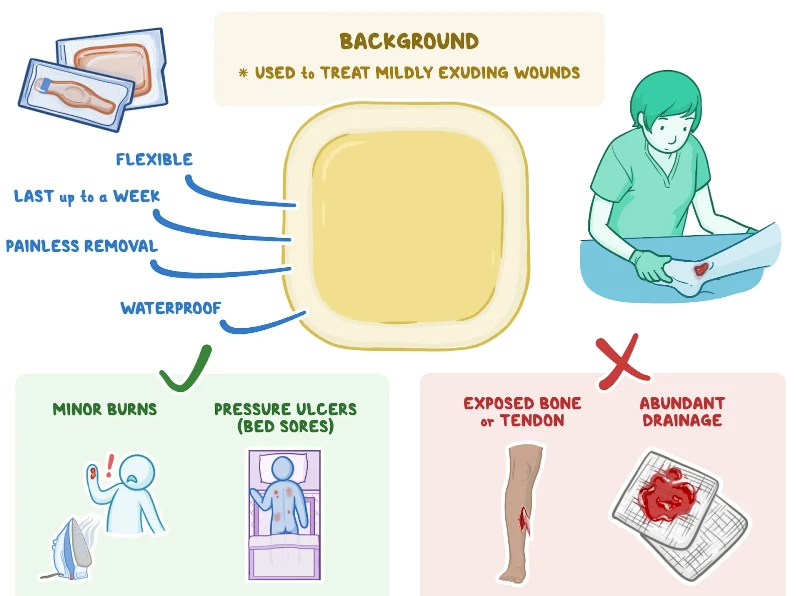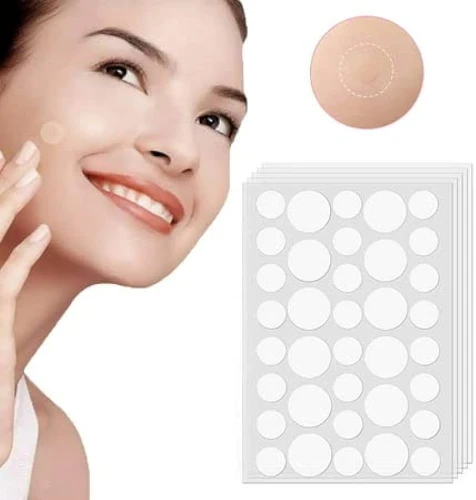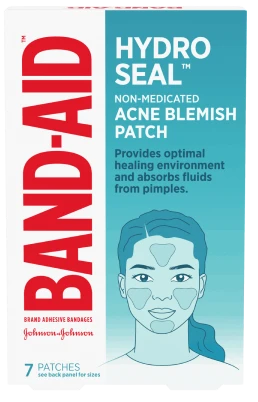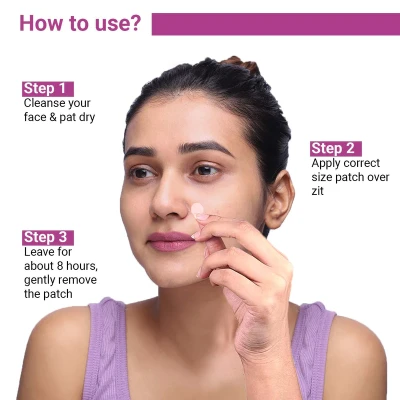Table of Contents
1. Introduction
Pimple patches have become a popular acne treatment in recent years. But how do these little stickers really work? And are they effective at clearing up breakouts? This article will explore everything you need to know about pimple patches!

2. What Are Pimple Patches?

Pimple patches are small hydrocolloid stickers placed directly on a blemish. The hydrocolloid material in pimple patches absorbs fluid and debris from the pimple, helping shrink the size of the breakout. Pimple patches also keep you from picking at or popping pimples, allowing them to heal faster.
Unlike traditional acne spot treatments, pimple patches take a different approach to clearing blemishes.
Spot treatments are typically liquid gels containing acne-fighting ingredients like benzoyl peroxide or salicylic acid. While effective, they can over-dry and irritate the skin. Pimple patches offer targeted acne healing without harsh chemicals.
The hydrocolloid material in pimple patches absorbs moisture and debris from a lesion without damaging the skin. This helps shrink and flatten breakouts by pulling out the contents inside. Pimple patches also protect against picking and popping, which can worsen acne. And they allow ingredients like tea tree oil or niacinamide to penetrate a blemish for added healing.
Pimple patches can be used on all types of mild to moderate acne. They are ideal for:
- Whiteheads – The hydrocolloid helps bring whiteheads to the surface faster for extraction, preventing picking and scarring.
- Inflamed papules and pustules – The fluid-absorbing patches help reduce redness, swelling and pain.
- Cystic blemishes – Large patches help draw out pus trapped deep under the skin, decreasing the likelihood the blemish will scar.
While no patch can treat severe or hormonal acne alone, they are suitable for most breakout types when used properly. Pimple patches offer a simple, effective option for quickening the healing of common pimples and preventing further skin damage.

3. How do they Work?
Pimple patches contain hydrocolloids, the same material used in blister bandages. When you place a pimple patch on a blemish, the hydrocolloid absorbs moisture, debris, oil, and pus from the pimple.
This helps reduce inflammation and swelling. The moist healing environment under the pimple patch also helps push all the gunk out of the pimple faster. This allows the blemish to shrink and flatten out more quickly.
The key ingredient in most pimple patches is hydrocolloid, which absorbs fluid and debris from blemishes. Some patches also contain added acne fighters like tea tree oil, salicylic acid, niacinamide, and hyaluronic acid to reduce inflammation and redness while accelerating healing.

4. Types of Pimple Patches
Now, let’s better understand the different types of patches so we can better decide which to use and when. Pimple patches can be divided into two types based on composition and use.
- Type 1: Hydrocolloid patches:

Hydrocolloid patches are small patches you can apply to an open pimple. They are made from a special gel-like substance that forms when mixed with water, creating a moist environment that aids in healing the skin. Initially used for general wound care, researchers discovered that hydrocolloid patches work effectively on open acne.
Their mechanism involves absorbing excess oil and impurities from pimples, assisting in flattening and promoting healing. These patches can even be a preventive measure to discourage touching your face.
Hydrocolloid patches are most suitable for mild breakouts and superficial pimples like small whiteheads and pustules. While generally safe for all skin types, individuals with highly sensitive skin should avoid using these patches as they could dry out or irritate the affected area.
Note: Hydrocolloid patches differ from medicated ones, which contain active ingredients like benzoyl peroxide, salicylic acid or tea tree oil to combat acne-causing bacteria and reduce inflammation.
- Type 2 : Medicated patches:

Medicated patches are small patches you apply directly to a pimple, similar to hydrocolloid patches. However, medicated patches have ingredients, like acid, tea tree oil or benzoyl peroxide, that can help eliminate acne-causing bacteria and reduce inflammation. Some medicated patches even have acid or tea tree oil infused to treat the acne while the patch is on.
Medicated patches are specifically designed to target specific types of acne, such as cystic acne or hormonal breakouts. They are best for active-active acne as they work by addressing the root causes of the breakout and providing more intensive treatment.
It’s important to note that medicated patches function differently from Hydrocolloid patches, which primarily absorb oil and debris from pimples to promote healing and flattening.
Since some individuals may find certain ingredients in patches irritating, it’s always advisable to read product labels and consult a dermatologist if you have sensitive skin.
5. Do pimple patches work?
Yes, pimple patches are an effective acne treatment. In clinical studies by patch brands, they’ve been shown to reduce pimple size, redness, swelling, and pain in as little as 6 hours. The hydrocolloid material extracts pus and fluids from the blemish, so you can see they work.
Pimple patches also work overnight to bring zits to a head faster and flatten them out. Within 1-3 nights of consecutive use, you should see a noticeable reduction in the size and inflammation of a breakout. Pimple patches help protect the skin barrier while sucking gunk out of clogged pores, allowing pimples to heal faster than they would on their own.
6. How to Use Pimple Patches

Using pimple patches effectively is easy:
- Cleanse skin and dry thoroughly before applying patches. Make sure there are no creams or oils on the blemish.
- Select the right-sized patch for your pimple – they come in small, medium, and large sizes. Gently place the patch directly over the pimple.
- Leave the patch on for at least 6 hours, ideally overnight. The longer the patch stays on, the more gunk it will extract.
- Remove the patch in the morning. Dispose of used patches and cleanse skin as usual.
- Repeat the process for 2-3 nights or until the pimple is gone.
7. Potential Side Effects
Pimple patches are safe to use, but check out for the side effects before you put all your trust in them.
- First, they are only a surface-level treatment. Patches can’t address deeper acne issues like excess oil production or bacterial buildup deep in pores. They’re best for tackling mild to moderate breakouts.
- Severe cystic acne likely won’t be resolved with patches alone.
- Improper use also limits their effectiveness. Applying patches to unpopped whiteheads may seal bacteria inside.
- Using them on dirty or highly irritated skin can cause adverse reactions.
- People with sensitive skin may experience itching or redness from certain medicated dot ingredients.
- Overusing pimple patches on one area frequently may lead to skin dryness and flaking. It’s best to give skin a break in between uses. Avoid relying solely on patches to treat acne long-term without addressing underlying causes.
8. Conclusion
Pimple patches are an effective spot treatment that helps tackle breakouts fast. Incorporate pimple patches into your acne skincare routine to reduce blemishes quickly and minimise the chances of scarring. With their ability to shrink angry pimples overnight, pimple patches live up to the hype. If you struggle with pesky pimples, try pimple patches for clearer, calmer skin.
9. FAQ Section
- Can you wear pimple patches under makeup?
Many pimple patches are transparent or flesh-toned to be worn under makeup. Look for thin, smooth patches or smaller dots to avoid a visible bump under makeup. Apply makeup as normal over the patch. Just be gentle removing makeup, not displace the patch.
- How long should you wear a pimple patch?
Ideally, leave pimple patches on for at least 6-8 hours. Overnight use for 8-12 hours allows more time for the patch to absorb fluid and flatten the blemish. Patch brands recommend replacing the patch after a full 24 hours for hygienic reasons.
- Do pimple patches help with acne scars?
No, pimple patches don’t treat acne scarring. They help prevent scarring by protecting spots from picking and popping. But they don’t contain ingredients to fade post-acne marks. A vitamin C serum or retinol can help improve the look of existing acne scars.
- Can you reuse pimple patches?
Never reuse or reapply a used pimple patch. The patch should be discarded once it has absorbed fluid from a blemish. Always apply a fresh, new patch to prevent the spreading of bacteria.


